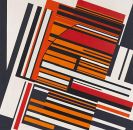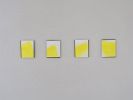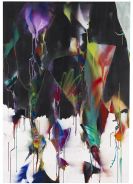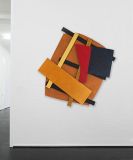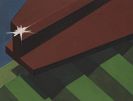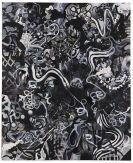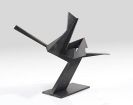
Günter Fruhtrunk
München
1923 -
München
1982
Günter Fruhtrunk was born in Munich in 1923. After finishing secondary school he studied architecture at the "Technische Hochschule" in Munich, which he gave up after two semesters to join the army as a volunteer in the fall of 1941.
During the war the artist began to draw and paint landscapes in watercolor, probably to balance his war experiences. In 1945 Günter Fruhtrunk began to study privately under the painter and printmaker William Straube in Neufrach, who was a student of Hölzel and Matisse.
In 1948 Günter Fruhtrunk met Willi Baumeister and in 1949 he became acquainted with Julius Bisier. According to the artist himself, these encounters led him towards abstract painting. In 1954 he received a scholarship from the Land Baden-Württemberg and the Gouvernement Français and moved to Paris, to work in the studios of Léger and Arp.
In 1955 Günter Fruhtrunk first showed the results of his work to the public at an exhibition of the René Drouin's Cercle Volnay in Paris. During the 1960s the painter mainly lived and worked in Paris and France. In 1961 he received the Prix Jean Arp in Cologne and in 1966 he was awarded the silver medal of the Prix d'Europe in Ostende.
In 1963 Günter Fruhtrunk's works were shown in a retrospective at the "Museum am Ostwall" in Dortmund. In the winter semester of 1967/68 Fruhtrunk began teaching at the Munich art academy. His participation in "documenta 4" indicates how important the artist was for German art history after World War II.
It was Günter Fruhtrunk who transformed the ideas of Constructivsim to a colorful rhythmical pictoral world, by creating a dynamic language of form with vector-like diagonal lines arranged strictly rhythmically according to their alternating colors.
Günter Fruhtrunk committed suicide in his studio at the Munich art academy on December 12, 1982.
Would you like to sell a work by Günter Fruhtrunk?
Infos for seller
